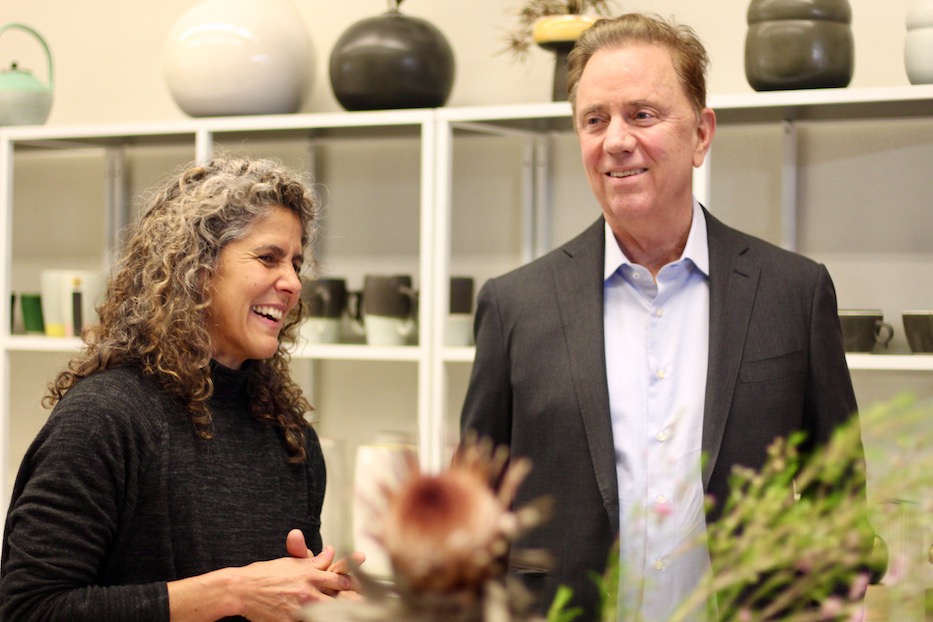
Culture & Community | Economic Development | Arts & Culture | Ninth Square | Visual Arts | Ceramics
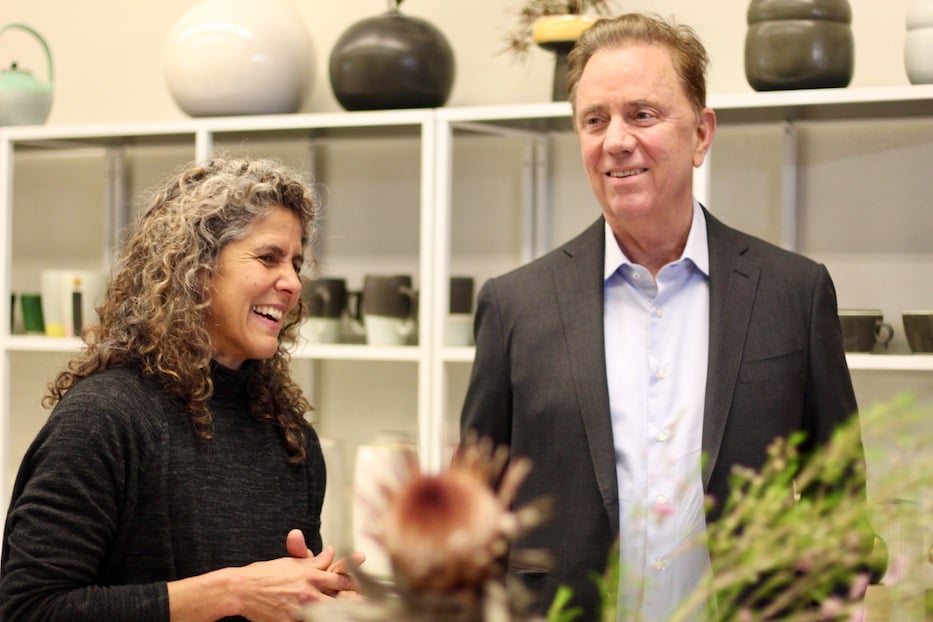
Kiara Matos and Gov. Ned Lamont. Lucy Gellman Photos.
Kiara Matos floated through her Orange Street studio, in a ceramic wonderland entirely of her own making. Over one shoulder, scalloped candlesticks glowed sky and steel blue beneath the light. A pink and orange bird looked out onto the street, its gold beak leading the way. A sprig of red berries peeked out from a squat butter-yellow vase. Not so much as a pinch of clay, it seemed, had gone to waste.
It’s one of the ways that Matos, a Venezuelan American sculptor who opened her 137 Orange St. studio in fall 2021, is growing her practice of sustainability into the new year. Friday, she had a chance to show some of that work as business leaders and state officials stopped by the space for an afternoon tour and conversation.
The group included Gov. Ned Lamont, Women’s Business Development Council (WBDC) CEO Fran Pastore, and Department of Community and Economic Development Deputy Commissioner Alexandra Daum. Matos was a recipient of a $10,000 Equity Match Grant (EMG) from the WBDC last year.
Pastore noted that the grant cycle is open again; people can learn more and apply here. Since starting the grant program, WDBC has awarded $1.2 million to 129 women-owned businesses.
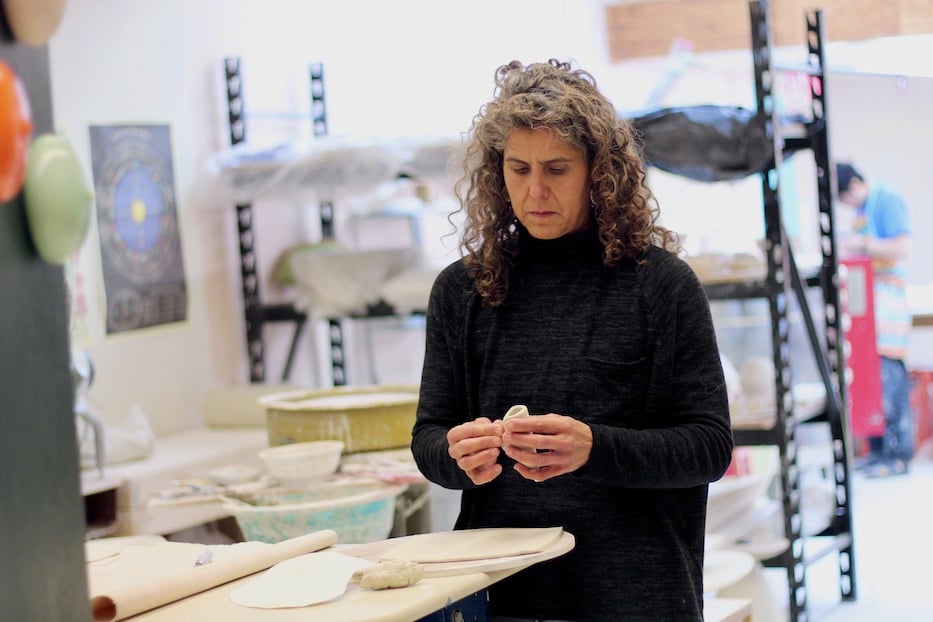
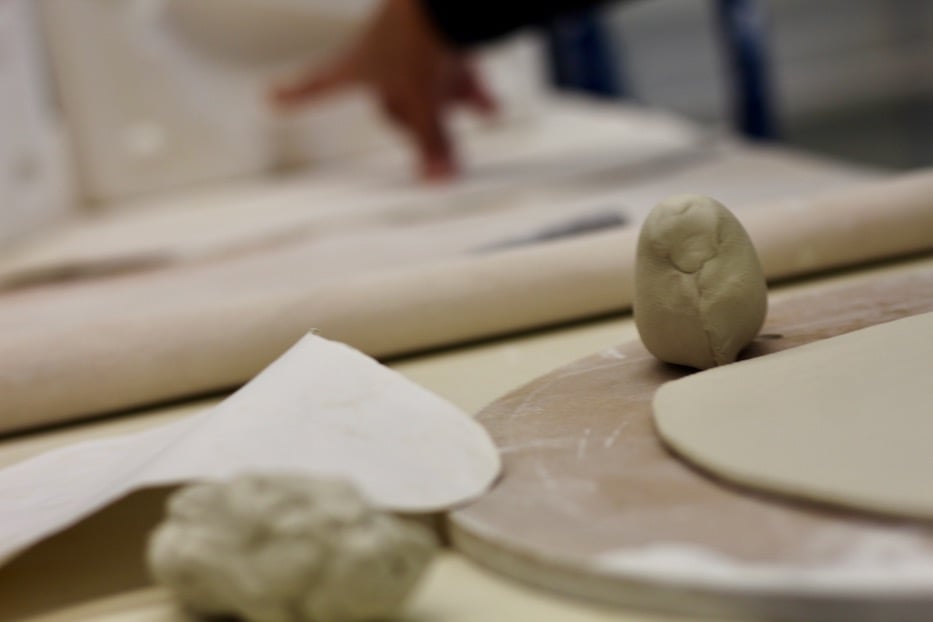
Matos displayed the difference between using a plaster mold versus sculpting one of her birds by hand.
“They came in at the right moment to provide the help I needed to become more efficient,” Matos said of the grant on Friday. “I always worked by myself, and I opened this store knowing I couldn’t do it all by myself anymore. And the equipment I got … helps me bring people in to help me and also make the process more efficient.”
A large part of that is the sustainability embedded in her practice. Currently, her space is split into a street-facing storefront and a tidy studio, with a potter’s wheel and enormous kiln, and shelves and tables for sculpting and storage. As she walked the group through the studio, she envisioned a greener business model, from recycled clay to new techniques that make her raw materials more eco-friendly.
Peppered with questions about her upbringing in Venezuela, Matos steered the conversation toward her craft, a style for which she has become known across New Haven. Daum beamed as she spotted an octet of dainty bird earrings with tiny gold beaks by the register. Two blue-green vases rested their bulbous bodies beside them.
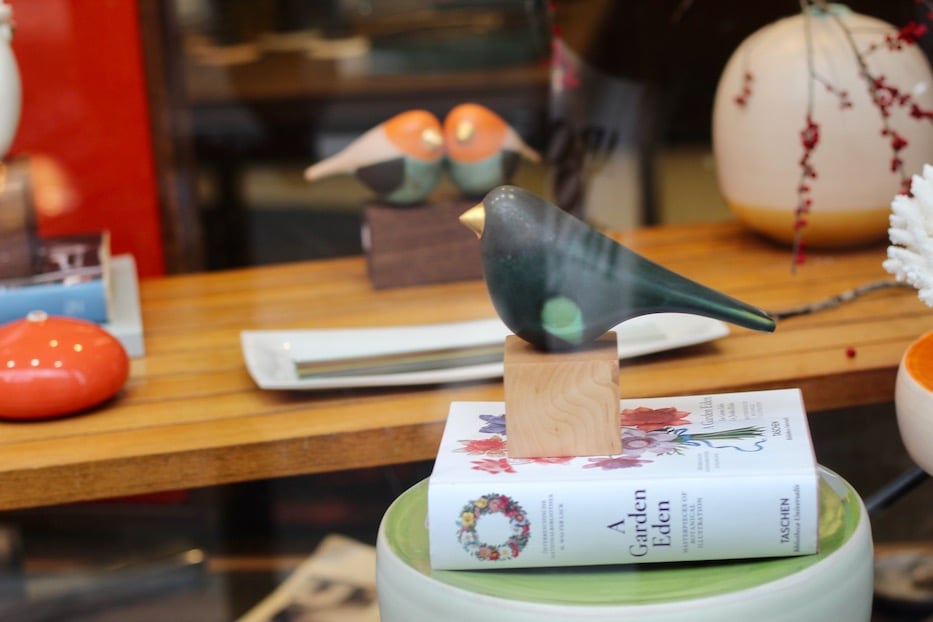
"Kiara has a good following in New Haven—she's kind of a cult favorite around here,” Daum said. “A lot of times you go to someone's house, and their whole dining room table is covered in Kiara's ceramics.”
“I don't think I know that many people in New Haven who doesn't own one of my pieces,” Matos said. “New Haven is a great, supportive community.”
“Show me your bestseller!” Lamont (who later left empty-handed) suggested, and she glided over to two ceramic birds, sitting beak-to-beak on a shelf. She lifted one up, placing it gently in the palm of her hand, and began to talk about building out her business.
When Matos received the WBDC grant, she knew exactly what to put it towards. She bought a slip casting machine, which has allowed her to start making plaster molds for popular pieces like her birds. She also bought a pug mill, which turns hardened, bone dry scraps back into hydrated, malleable clay that she is able to use.
That took her to $8,000. The remaining $2,000 went towards a ball mill, a grinder that can crush organic materials into tiny pieces. It is for a new sustainability-focused project that she is not yet ready to announce.
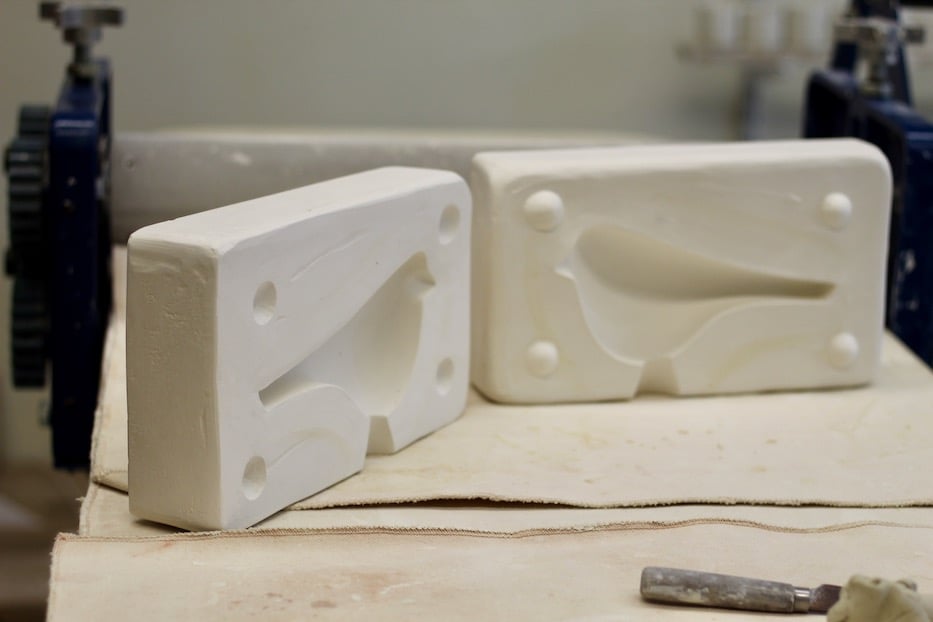
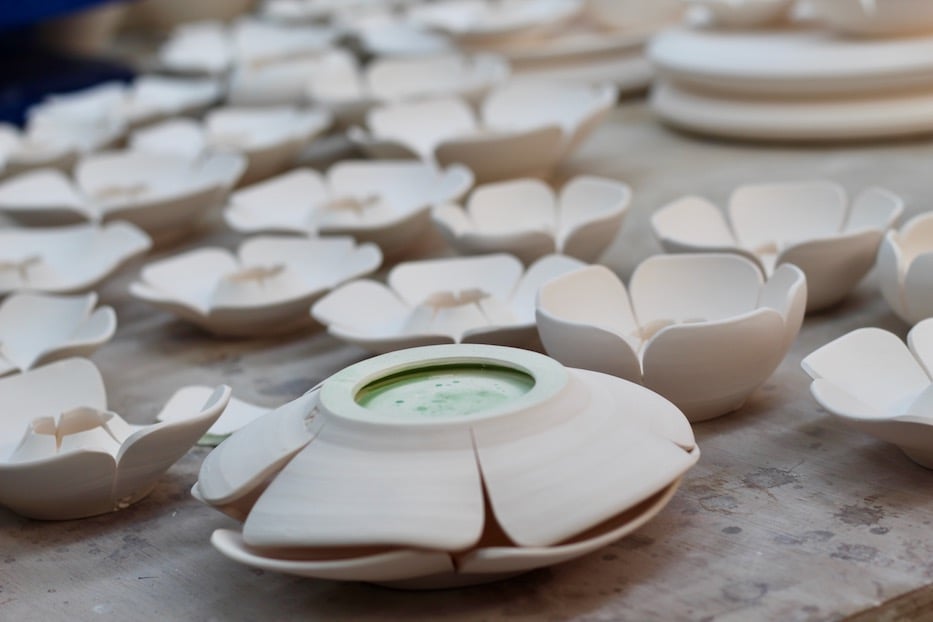
The new equipment has allowed her to think about how she can make her practice easier and more sustainable without losing any of the craftsmanship. Prior to the slip casting machine, for instance, one of her colorful ceramic birds took her roughly five hours to sculpt by hand. With the mold, that time frame is more like 25 minutes. She wants to create a mold for her popular bowls next, she said.
With her love for her craft comes a certain level of responsibility, Matos added. After working in ceramics for decades, she thinks constantly about the natural resources that are mined—often at great harm to the surrounding environment—for the ceramic industry. In addition to clay itself, pottery relies on large amounts of calcium carbonate and metallic oxides like cobalt, copper, iron and nickel.
Matos loves her work—and has become known for her clean, whimsical style and bright splashes of color. But when she thinks about the environmental footprint that it leaves, “it’s not a pretty thing,” she said. Mining can contribute to air pollution, contaminated groundwater, and the collapse of natural ecosystems. She’s worked to eliminate waste where she can.
She recycles every bit of clay she uses, which amounts to roughly two and a half tons per year (she had high praise for her supplier, Massachusetts-based Sheffield Pottery). For the past year, she’s been working on a special project that would help shrink the environmental impact of her work.
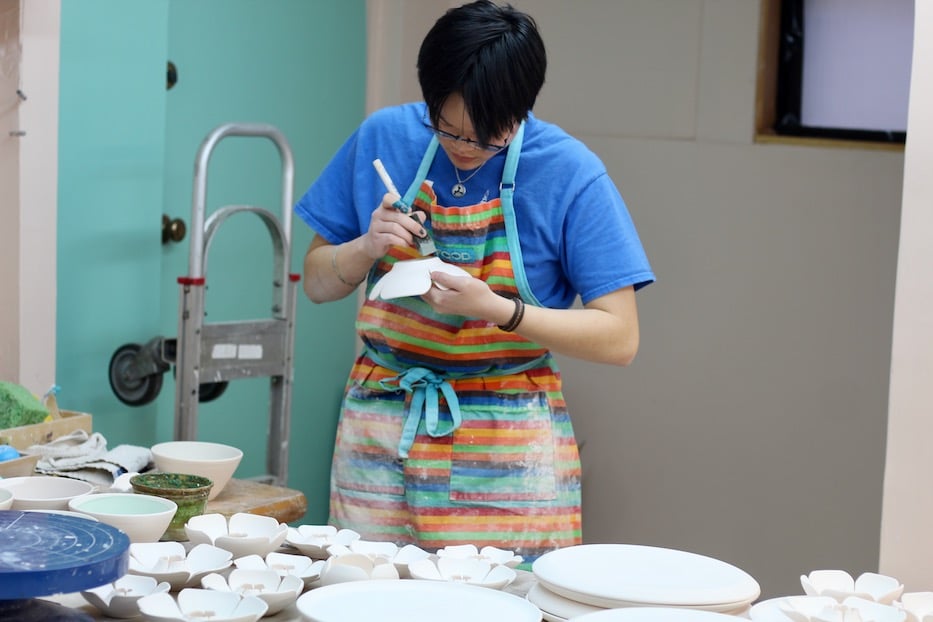
Jingju Martin.
She’s also trying to keep a small business afloat. Last year, Matos was so busy with the storefront that her wholesale vendors and online sales fell to the wayside. She doesn’t yet pay herself a salary, and she isn’t yet able to pay apprentices or employees for their work. With the new equipment in hand, she hopes to increase production, get back online, and be able to hire someone to work with her (she’d also love to be able to take a salary).
Currently, dozens of ready-to-fire pieces sit in the back of the studio, waiting patiently for their chance in the kiln. As she expands her practice, an extra pair of hands could help.
Friday, that news resonated through the space, where apprentice Jingju Martin worked diligently at a table in the back. Moving carefully, Martin inverted a large, undulating flower shape, carefully applying a layer of wax that would keep it from sticking to the kiln. Its petals spread outward, like a small greeting. Matos explained that it was part of a commission she had landed for a large installation, which helps her support the business.
As a student at Amity High School and apprentice at the Eli Whitney Museum, Martin met Matos through former Eli Whitney Museum Director Bill Brown a few years ago. She is now a student at Goucher College, studying both art history and studio art. She comes back to the studio when there’s a break.
“It’s great being able to have this hands-on experience,” she said.
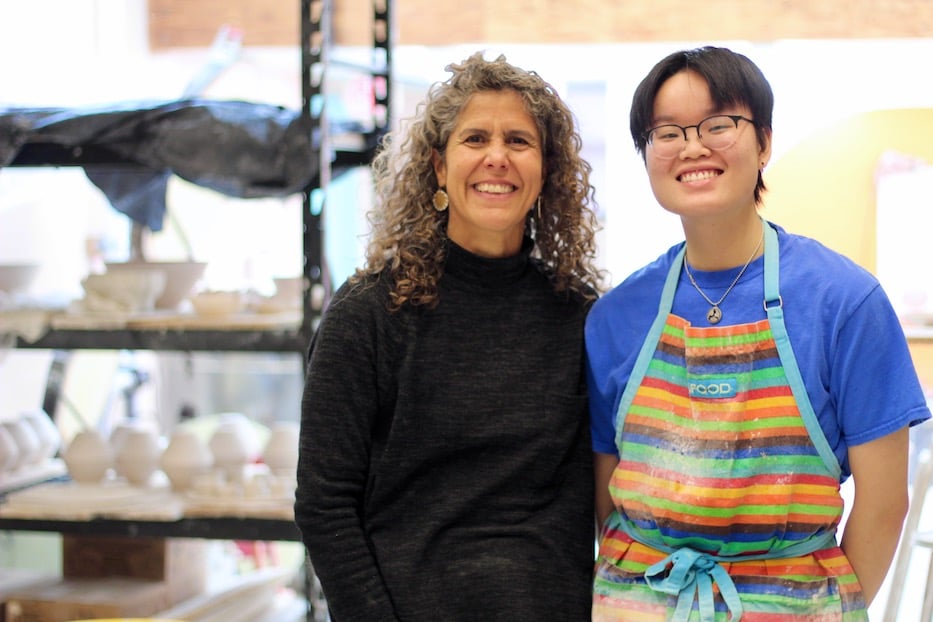
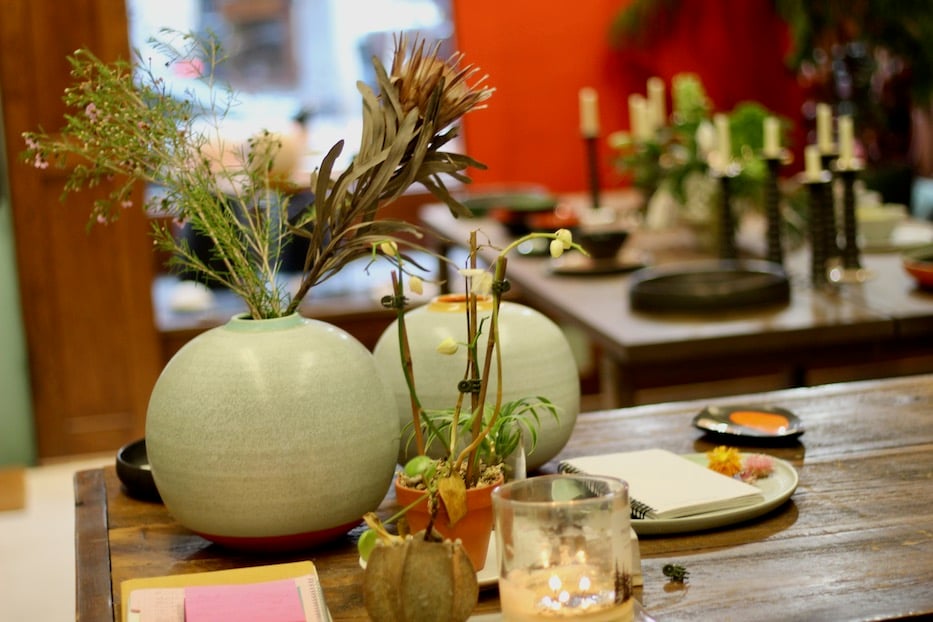
Top: Kiara Matos and Jungju Martin. Bottom: The shop on Friday.
As the afternoon wound down, Matos said that she would like to see the state do more to support Connecticut’s creative economy—including free and highly subsidized classes or pop-ups. When the state’s economy is good, she sees more people come into the shop, and they tend to spend more money. That means that she can keep the lights on.
She remembered visiting Lisbon several years ago, and seeing a pottery class running outdoors. The street was full of students of all ages, all learning ceramics. In New Haven, she thinks it would be an instant hit. “Clay is amazing therapy,” she said.
As a board member at Creative Arts Workshop, she said she would even be happy to teach such a class—but needs the supplies and the support before she can do it. While she only has two wheels in the studio, she recently learned that the Dixwell Community Q House has several wheels, but no pottery classes. Sometimes, that one missing piece feels like it’s state or municipal funding.
“I just thought of what the governor and politicians could do for artists in general,” she wrote in a message after the visit. “Make sure that when they design public spaces or need gifts, they go to local artists.”

